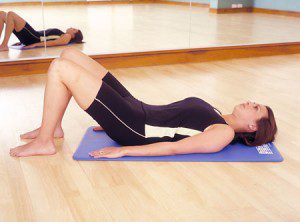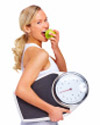Why Exercising Pelvic Floor Muscles Goes Way Beyond Toning and Strengthening Of Muscles?
Do you imagine high bulging biceps, washboard abs and tree like shaped legs? Well, I didn’t think so either…okay, so there’s a far more important group of muscles in regards to women’s health…
Yes! Your pelvic floor muscles are way too often overlooked. This crucial group of muscles, (stretches from public bone to base of spine) supports vital organs bladder and bowel movements (to controlling opening & closing of anus and urethra).
Discover Specific Enjoyable Abdominal Exercises For The Benefit Of Enhancing Sexual Pleasures While Increasing Your Healthy Core Muscles…
The pelvic floor also helps control the uterus and vagina in women. Incontinence, uterine prolapse in women, and erectile dysfunction in men can all be caused by feeble pelvic floor muscles. Try the following exercises to strengthen your pelvic floor muscles.
Kegels are popular exercises reduce the likelihood of incontinence by strengthening pelvic floor muscles. Kegels can be done throughout the day whenever you feel inclined. To complete this exercise, simply contract your muscles as if you are attempting to halt the flow of urine.
For the best results, focus on tightening your muscles for five seconds, then rest for five seconds. Slowly increase the time you are constricting your muscles until you can maintain pressure for 10 seconds at a time. Perform five set of five reps during the day. Experience elevator Kegels as your workout will further tone your pelvic floor.
Tighten your muscles, then constrict even more for two counts: imagine drawing your muscles deeper into your body like an elevator ascending multiple levels, then relax. Your goal is to complete five sets of 10 each day.
The pelvic floor can also be strengthened with a variety of abdominal exercises. If executed properly, abdominal exercises can reach deep in the core, stimulating the entire abdominal region along with pelvic floor. Pulling your belly button back towards your spine while abdominal training helps to engage deep core muscles.
The single leg plank is an excellent exercise to strengthen your pelvic floor. Recline on your back, bend your knees, and place your feet solidly on the floor. Extend one leg, maintaining contact between your knees. Slowly raise you hips off the ground, engaging your abdominals, until your torso is in a straight line with your thighs.
Now, slowly relax, moving down and repeating with your other leg straightened. This is one full rep. Your goal is to complete two sets of 12-15 reps, three times a week (or progressing to this level).
Pilates is designed to focus on toning the muscles of your core. Many Pilates activities entail allowing the arms and legs to move about as the torso remains steady. Such movements require engagement of core muscles, including pelvic floor muscles.
To receive optimal pelvic floor strengthening benefits of Pilates, engage in Pilates at least three times a week. The double straight leg is an easy Pilates exercise you can perform at home. Lie on your back, place your hands under your head, and raise your legs straight up to form a 90 degree angle with your torso.
Lower the legs as a single unit to a 45 degree angle, then slowly draw them back upward to the 90 degree angle to complete one rep, perform 10 reps to complete your set. Women’s Health – Exercising Pelvic Floor Muscles
 Can you lose weight eating anything you want? Yes, it is absolutely possible to lose weight and eat whatever you want.
Can you lose weight eating anything you want? Yes, it is absolutely possible to lose weight and eat whatever you want.





